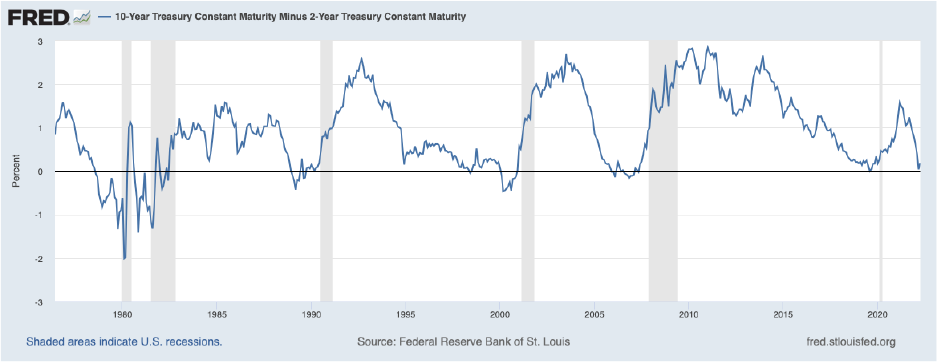
To what extent should entrepreneurial businesspeople concern themselves with macro-economic variables? At E4B, our point of view is: not much. We don’t believe you can fully trust the data, we don’t believe you should put much credence in the interpretations of it, and we encourage businesses to concentrate on serving customers and generating value.
We made an exception this week to discuss the phenomenon of the inverted yield curve, because it might, conceivably, have some immediate effect on businesses and their customers. We talked with Dr. Murray Sabrin, author of Navigating the Boom/Bust Cycle: An Entrepreneur’s Survival Guide.
Key Takeaways and Actionable Insights
The yield curve inverted. What does that mean?
Technically, the yield curve inversion refers to short term interest rates on the 2-year treasury note doing above the interest rate on the 10-year treasury note.
The reason this is of interest is that, historically, it’s a signal that the countdown to a recession has begun. At the human level, it means that market participants expect tighter short-term borrowing conditions, potentially making financing business activity more expensive and more difficult.
In reality, there’s no way to be certain of future conditions, and there are so many variables, from inflation to unpredictable Federal Reserve activities, that prediction is inevitably inaccurate.
Moreover, on their own terms, the Federal Reserve interest rate data are not consistent. The 3-month treasury rate remains 2% below the 10-year rate — no inversion there.
Therefore, predictions of a recession should be taken with the proverbial grain of salt. It may be different this time.
What matters is what entrepreneurs do in the face of this uncertainty.
Dr. Sabrin has a number of ideas and pieces of advice for businesses.
Examine conditions in your own sector rather than in macro-economic variables.
Economic conditions and trends and outcomes vary significantly by sector. What’s happening in automobiles, housing, energy, and retailing is sector specific.
Look especially for those sectors where free markets are allowed to operate; there may be different trends there. For example, deflation (a continuous trend towards lower prices) might be anticipated from the technology sector as result of innovation and competitive striving, rather than the price inflation we are being promised from other sectors.
Similarly, pay greatest attention to your most relevant geography: neighborhood, city, and state.
Economic conditions in Florida are a lot different than in California. Manhattan is different than San Diego. Your neighborhood might be different. Maybe your business operates internationally. Think about your relevant geography and not about the macro-economic headlines.
Focus first on your supply chain.
Dr. Sabrin’s extensive research into the longitudinal success of entrepreneurial businesses emphasizes the important of reliable inputs. In risky economic periods, the supply chain may need bolstering — extra inventory coverage, additional suppliers in case of disruptions. This may be expensive and more expensive to finance amidst rising rates, but guarding against supply chain disruption is a primary concern. Don’t risk disappointing your customers because your supply chain breaks.
Maintain your most important lending relationships.
If financing is a concern, look to bolster and strengthen lending relationships. Secure a line of credit. Nurture the relationship with your bank. And explore the newly emerging landscape of fintech lending — another example of free markets expanding the range of options and possibilities for entrepreneurs.
Here’s a financial landscape map from an earlier E4B podcast — use it to become familiar with the latest financing options: Mises.org/E4B_166_PDF
Your individual cost curve is not the same as that of the market.
The current pervasive concern is with higher interest rates and higher costs. These are macro-economic variables. But the cost curve for your business does not have to be the same. Many suppliers will be lowering prices and offering promotions or special terms to maintain their business flow. You can take advantage by shopping around, rebidding contracts, and seeking out the most eager suppliers. Your micro-economics can be different than the headline macro trends.
Most importantly, seek opportunities within changing economic circumstances.
An inverted yield curve is just another instance of continuous change, and change is the condition under which entrepreneurs thrive. They find opportunities in change. There are always growth sectors, there are always customers with needs, and there are always new openings, even when some doors are closing. The agile entrepreneur is alert to new possibilities.
Additional Resources
Navigating the Boom/Bust Cycle: An Entrepreneur’s Survival Guide by Murray Sabrin: Mises.org/E4B_166_Book
“Financial Capital Options For Businesses at All Stages” (PDF): Mises.org/E4B_166_PDF




